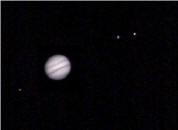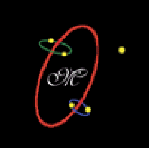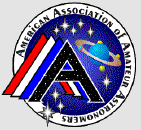 Project
Jupiter Project
Jupiter
  
XIII. Attachments
Attachment D: Weighing Jupiter, the Mathematics
Taken from Physics for Students of Science and Engineering,
Combined Ed., John Wiley & Sons, D. Halliday and R. Resnick, 1965
Consider two spherical bodies of masses M and m moving in circular
orbits under the influence of each otherís gravitational attraction. The
center of mass of this system of two bodies lies along the line joining
them at a point C such that mr =MR. The large body of mass m moves in an
orbit of constant radius R and the small body of mass m in an orbit of
constant radius r, both having the same angular velocity. The
gravitational force acting on each body must provide the necessary
centripetal acceleration. The centripetal force is mj 2 r, thus because of
the equality mr=MR, we find

Balancing the centripetal and gravitational forces we get

If one body has a much greater mass than the other, the R is negligible
compared to r. The above equation simplifies to

If the angular velocity is expressed in terms of the period of the
revolution,

Then the equation becomes

Re-arranging we have the form of Keplerís third law:

For Project Jupiter we now solve for M, the mass of Jupiter

|







